Di Vincenzo Simona
Introduction to global green building rating schemes and sustainable development in urban areas
The life in a city holds many opportunities and needs: social interaction, working possibilities and innovation. Today, more than half of the world’s population lives in cities and by 2050 the number is expected to grow up to 66 % (Sen, Eggars and Kelkar, 2018). Although cities occupy only 2 % of the earth surface they are responsible for 60-80% of the global energy consumption (Sodiq et al., 2019). Therefore the creation of sustainable cities is indispensable. One of many approaches are green and sustainable buildings.
We live in an age shaped by global mobility, which promotes people to migrate into other countries. For reasons such as poverty, lack of job possibilities, conflict, and inequality more and more people are migrating to cities in search for a “better” life. Not only international migration is growing but also migration within the country. This migration leads to growing megacities. Even though the large cities of today are experiencing the most notable urbanization, the biggest expansion of urban spaces is expected in cities of developing countries that have fewer than one million inhabitants. Up to 2050 today’s mostly rural regions like Africa and Asia will experience the fastest and largest growth of urban population (see figure 1) (UNDP, 2017).
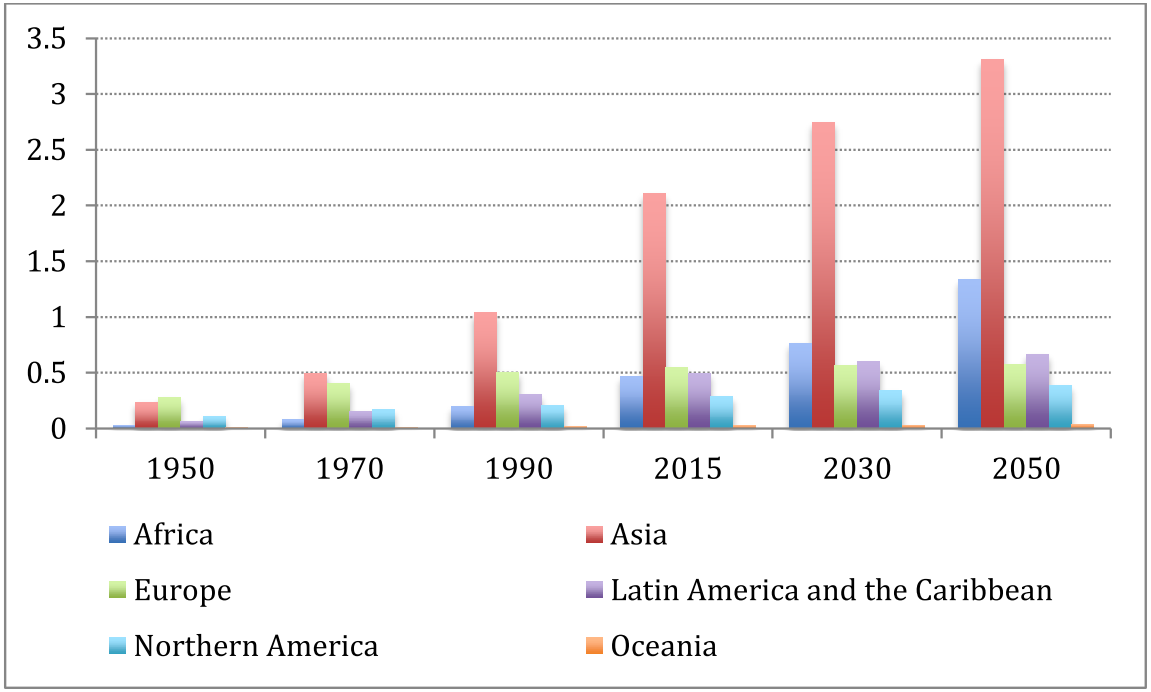
Figure 91.1 – Figure 1: Growth of population in urban regions (billion). [UNRISD, 2017:34]
There are many challenges and problems when facing the global trend of urbanization. One of these challenges is the environmental degradation. Due to a growing global middle class, with a higher level of consumption, polluting technologies and an exploitation of ecosystems. These occur not only, but mainly in urban areas (UNRISD, 2017). Furthermore, urban expansion also destroys an indispensable resource, which is often forgotten: the land. Studies have shown that the physical expansion in many cities is greater than the population growth. This suggests a declining density per living space and explains the spatial growth of cities. This is why many people are living in slums, especially in developing countries (Haase et al., 2018). Therefore, it is important to strive for a more sustainable urban development. A possible “solution” for more environmentally friendly cities is building more sustainably.
Green & Sustainable Buildings
To tackle the problem of dispersed urbanization, the buildings can be built to achieve higher density and therefore become more sustainable. To be considered sustainable, certain standards must be fulfilled. These separate into green or sustainable buildings. In the past, these words were used interchangeably but nowadays, they split into fundamentally different terms (Doan et al., 2017).
Green buildings need to provide healthy, practical and efficient space with harmonious architecture. At the same time they should minimize the usage of resources such as energy, land, water and materials. The environment should be protected and the pollution throughout the whole lifecycle reduced. Different to green buildings, the sustainable buildings get defined by their four pillars: environmental, social, economic aspects and institutional issues in the concerning city (see figure 2) (Doan et al., 2017).
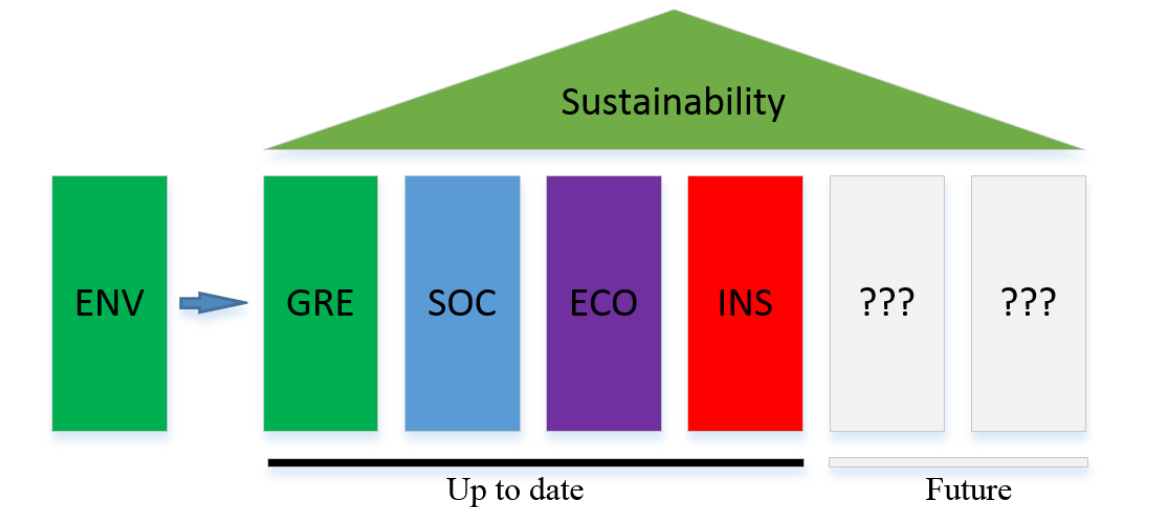
Figure 91.2 – Figure 2: Four pillars of Sustainability: environmental (ENV), social (SOC), economic (ECO), institutional issues (INS). Green (GRE) involves the environmental improvments [Doan et al., 2017:3]
This distinction in the definitions may seem trivial, but it is important for assessing the sustainability of buildings. The sustainability respectively greenness can be checked and assessed using different green rating systems.
Green Building Rating Systems
There are several green rating systems, which have different areas of application and depend on the country and the variables, one likes to explore. A building has great impact on the environment during its lifecycle (construction, occupancy, renovation, repurposing, demolition) and it generates waste and uses up energy, water and materials. Therefore, it is important to implement a sustainable design. That is why rating systems and environmental standards were introduced in 1990. Out of the many systems and standards, only a few and the most ones will be presented (Vierra, 2019)
The first global rating system is the Building Research Establishment’s Environmental Assessment Method (BREEAM) launched in the UK. Because of its wide acceptance all major rating systems that followed are strongly influenced by BREEAM. It evaluates the buildings lifecycle based on design, the way it is built, operation and refurbishment. In the assessment process not only local codes and conditions are integrated but it is also implemented on an international level (Doan et al., 2017).
Following BREEAM, the Leadership in Energy and Environmental Design (LEED) was developed 1998 in the United States. It is considered the most widely adopted rating scheme, based on the number of countries it is applied (160). LEED rates environmental factors such as efficiency in water, energy, material and resource use, sustainable location and indoor environment (Doan et al., 2017).
Green Star Award was introduced in 2003 by the Green Building Council of Australia. The Green Star certification evaluates the sustainable design, construction and operation of the building (Certified Energy, 05.05.2020).
Even though BREEAM has an influence on most rating systems, the schemes focus on different categories and features (see figure 3) (Doan et al., 2017).

Figure 91.3 – Figure 3: Comparison of the rating systems Green Star, LEED, BREEAM and CASBEE (japanese rating system) by sub- categories [Doan et al., 2017:16]
A very famous standard developed in Switzerland is Minergie. Globally recognized for its effectiveness in low energy and resource consumption (60 % less energy than a conventional building) it is approved by known rating schemes like LEED (Beyeler, Beglinger and Roder, 2009).
What is a green building?
We talked mostly about what defines a green respectively sustainable building and how these standards can be pushed with the help of rating systems in order to implement a more sustainable urban design in the future. What features are needed to build a green home, school or office? In most countries a sustainable building includes:
Efficient use of energy, water and other materials; renewable energy source; reduce pollution and waste; effort in re-using and recycling materials; good indoor air quality; no use of toxic materials; consideration of the environment in design, construction and operation and lastly consideration of the quality of life (World Green Building Council, 05.05.2020). Keeping these features and rating systems in mind, we will take a closer look on three impressive sustainable buildings from around the world and look at their sustainability index.
Olympic House, Switzerland (2019)
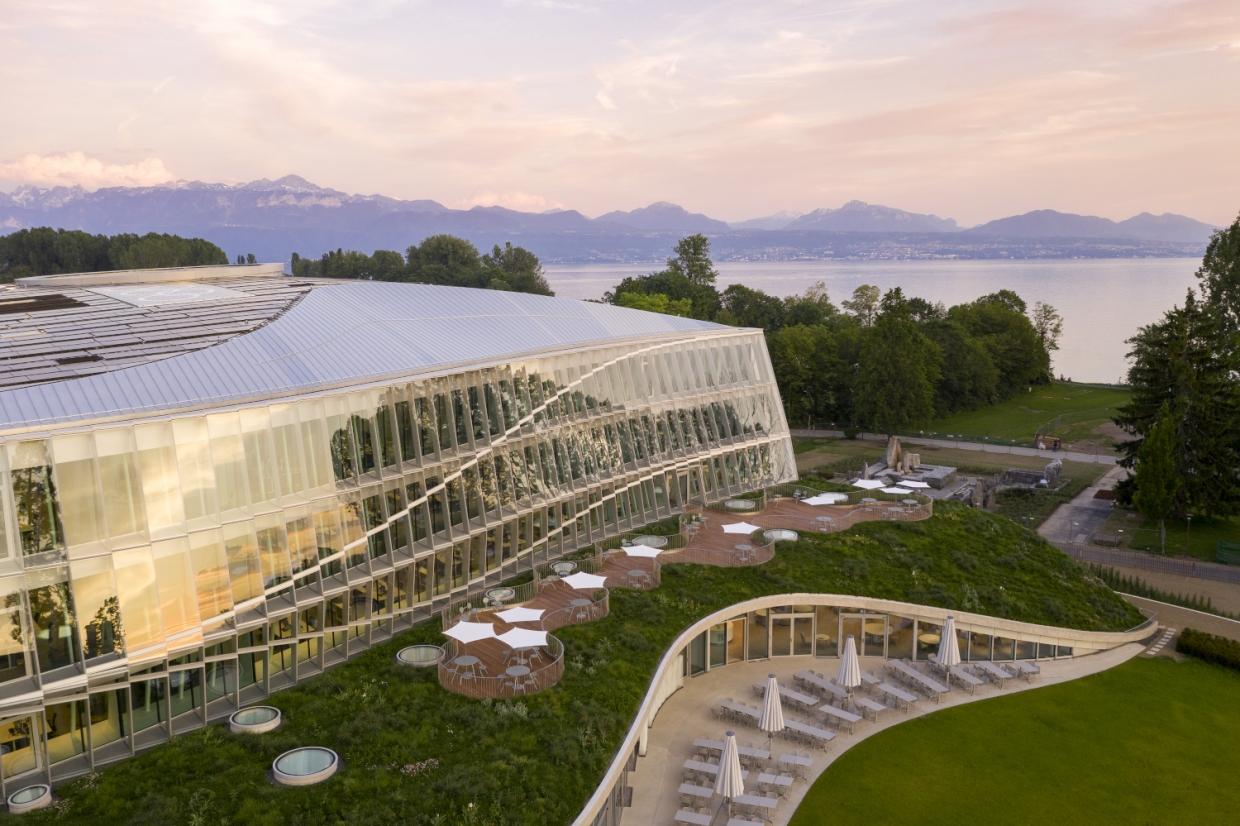
Figure 91.4 – Figure 4: Olympic House, Lausanne. [Schmidiger, 2019]
The Olympic House located in Lausanne, Switzerland is valued as one of the most sustainable buildings in the world. The energy is obtained from sustainable sources such as solar panels and heat pumps, which uses water of the nearby Lake Geneva. Reportedly, it is expected to use 35 % less energy and 60 % less municipal water than a conventional construction does. Materials used in the construction and the furniture comply to strict environmental standards. Furthermore, 95 % of the former International Olympic Committee (IOC) headquarter was recycled and reused. For the buildings conservation of resources, minimal carbon emissions and prioritising sustainability goals this building received the certification LEED platinum. In addition it obtained the highest level of the Swiss Sustainable Construction Standard (SNBS) and the Swiss standard Minergie P (Olympic News, 2019).
The Edge, Netherlands (2015)
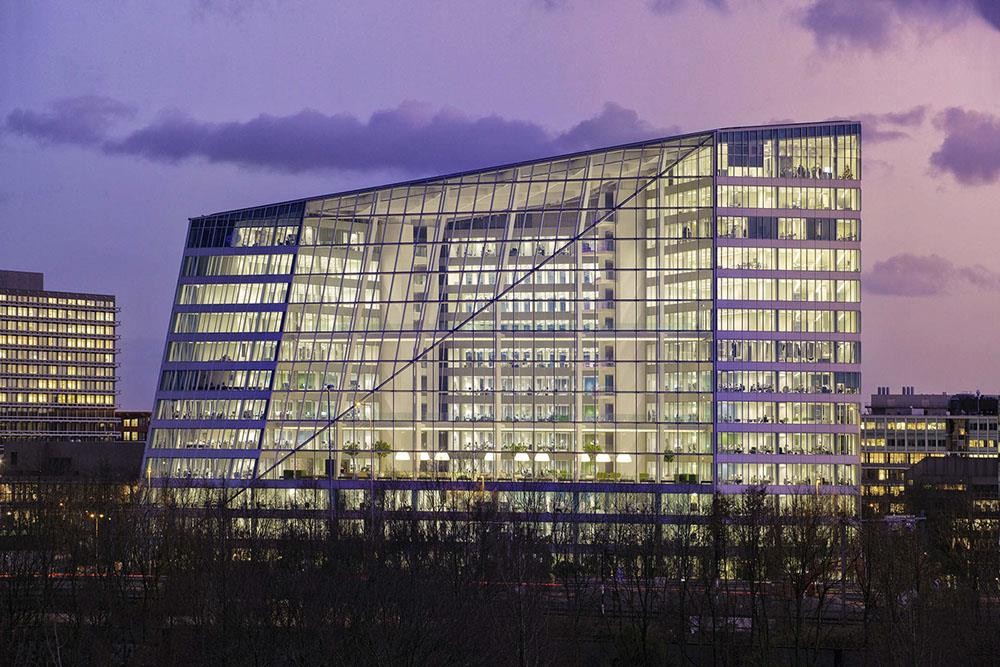
Figure 91.5 – Figure 5: Smartest building in the world: The Edge, Amsterdam. [Fytrou-Moschopoulou, 2017].
The Edge, an office building in Amsterdam, is considered the greenest building in the world. The certification scheme BREEAM gave it the highest sustainability score ever: 98.4 %. There are notable sustainable highlights in this construction. For example through its smart orientation and form the power of the sun can be optimally utilised. Solar panels provide energy and the glass front regulates the temperature inside, simultaneously maintaining a high insulation. 95 % of the materials are from responsible origin and are FSC-certified. Rainwater gets collected on the roof and is used to flush the toilets. The Edge is not only a sustainable but also a smart building. Through an application the workers are immediately connected with the buildings functions. As soon as employees enter the parking lot, a parking spot gets assigned. Working space and desk location vary as their time schedule and activities change. This interactive management system helps to reduce energy consumption and cost (Fytrou-Moschopoulou, 2017).
Council House 2, Australia (2006)
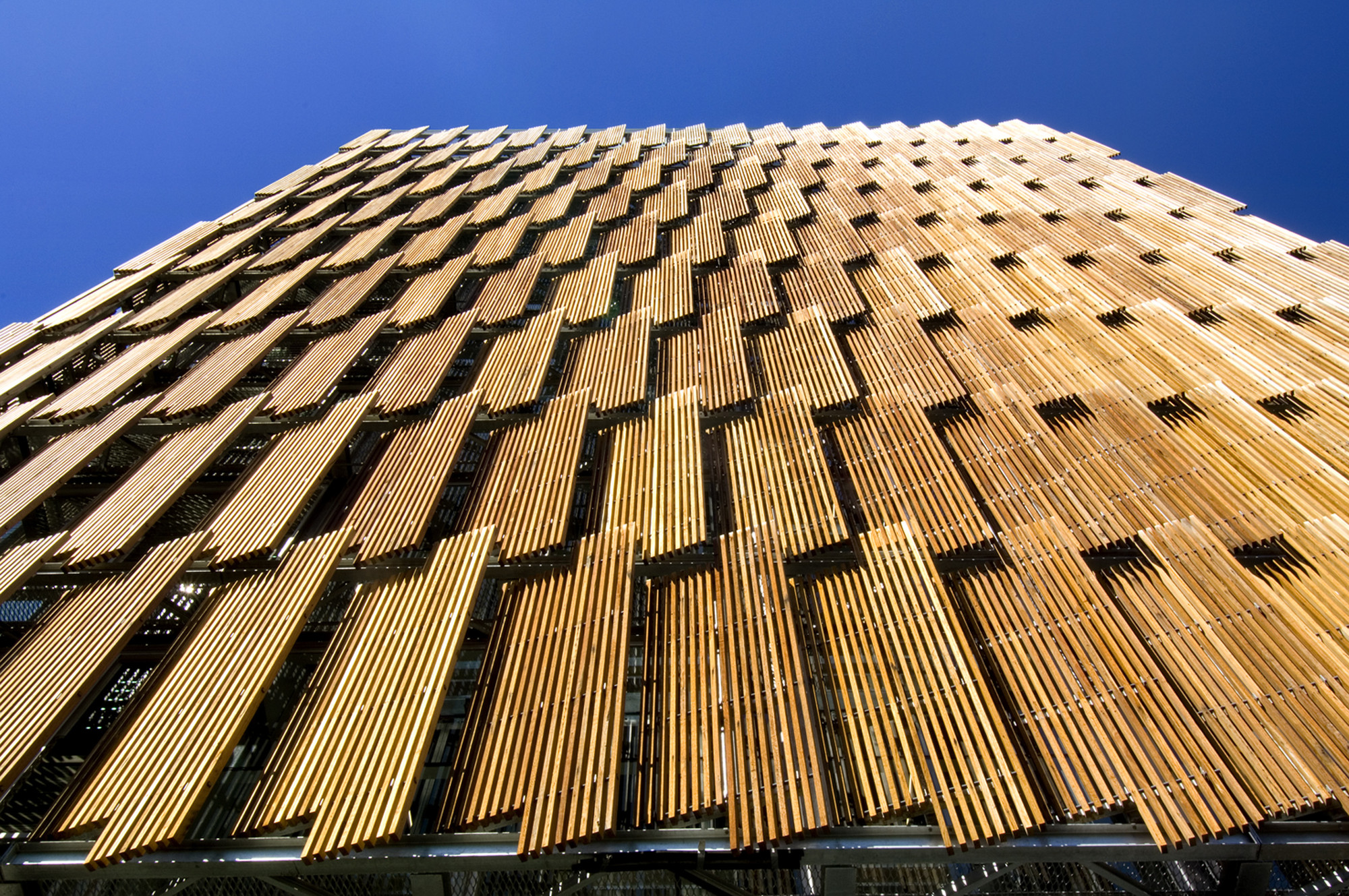
Figure 91.6 – Figure 6: Council House 2, Melbourne. [Smart Bricks, 2017]
The Council House 2 (CH2) building is located in Melbourne and is claimed to be the greenest and healthiest office building in its time of construction. The design produces lower Co2 emissions (87% less), lower electricity (82%), gas (87%) and water usage (72%). On account of the office building design it received the six Green Stars Award from the Green Building Council of Australia, who evaluate environmental design and performance of buildings in Australia. Equipped with solar panels, phase-changing materials for cooling, a water cooling system and roof landscaping, the CH2 has set a global benchmark for design and environmental construction (Greenlivingpedia, 2011).
Conclusion
As the construction industry is a major contributor for environmental degradation and facing an exponentially growing urbanization, it is important, that resource use and spatial expansion get on a more sustainable path. Recognizing the potential of sustainable and green buildings with the help of green and sustainable rating schemes, building facilities with minimal environmental impact have increased in the past years. Most of these exemplary buildings are still financed privately, but with a more economic approach, the number of environmentally friendly buildings and cities can be increased.
Bibliography
Beyeler, F., Beglinger, N. and Roder, U. (2009): “Minergie: The Swiss Sustainable Building Standard”, Innovations: Technology, Governance, Globalization, 4(4), pp. 241–244.
Certified Energy (no date): What is Green Star and when is it required? https://www.certifiedenergy.com.au/what-is-green-star (Accessed: 5 May 2020).
Doan, D. T.; Ghaffarianhoseini, A.; Naismith, N.; Zhang, T.; Ghaffarianhoseini, A. and Tookey, J. (2017): “A critical comparison of green building rating systems”, Building and Environment, pp. 1–26.
Fytrou-Moschopoulou, A. (2017): “The Edge: Amsterdam office building with highest BREEAM score to date.” https://www.buildup.eu/en/practices/cases/edge-amsterdam-office-building-highest-breeam-score-date (Accessed: 5 May 2020).
Greenlivingpedia (2011): “CH2 building.” https://www.greenlivingpedia.org/CH2_building (Accessed: 5 May 2020).
Haase, D.; Güneralp, B. ; Dahiya, B.; Bai, X and Elmqvist, T. (2018): “Global urbanization: Perspective and Trends, Global Urbanization.”
Olympic News (2019): “Olympic House becomes one of the most sustainable buildings in the world.” https://www.olympic.org/news/olympic-house-becomes-one-of-the-most-sustainable-buildings-in-the-world (Accessed: 5 May 2020).
Schmidiger, C. (2019): “Olympic House, Lausanne.” https://www.architektur-aktuell.at/projekte/olympic-house-lausanne (Accessed: 5 May 2020).
Sen, R., Eggars, W. D. and Kelkar, M. (2018): “Building the smart city Deloitte Center for Government Insights”, Deloitte.
Smart Bricks (2017): “20 Most Sustainable and Green Building Examples From Across the Globe.” https://gosmartbricks.com/sustainable-and-green-building-examples/ (Accessed: 1 May 2020).
Sodiq, A. et al. (2019): “Towards modern sustainable cities: Review of sustainability principles and trends”, Journal of Cleaner Production. Elsevier Ltd, 227, pp. 972–1001.
UNRISD (2017): “Global Trends: Challenges and Opportunities in the Implementation of the Sustainable Development Goals.”
Vierra, S. (2019): “Green Building Standards and Certification Systems, 2019.” https://www.wbdg.org/resources/green-building-standards-and-certification-systems (Accessed: 5 May 2020).
World Green Building Council (no date): “What is green building?” https://www.worldgbc.org/what-green-building (Accessed: 5 May 2020).